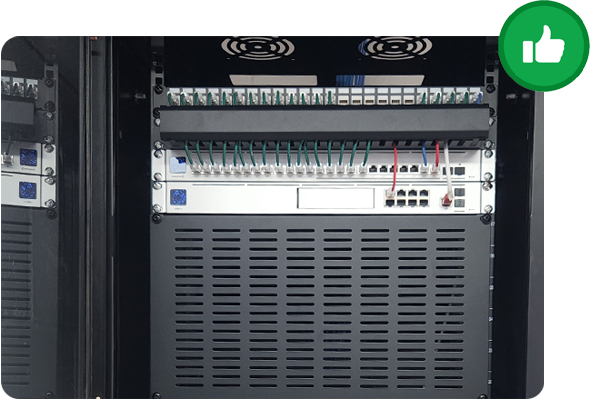Data Cabling & Rack Management
No Lock-In Contracts
100% Australian Based
5 Stars from 30+ Reviews
In need of structured cabling services?




Unmanaged data cabling in your network rack can be hurting your business.
Unmanaged Cabling
Decreased Office Space
Longer Downtime
Warning
Data Cable Standards For Your Business
Different situations require varying strategies when it comes to implementing structured cabling standards. For instance, working on a converted older building may necessitate innovative solutions, whereas modern office buildings are designed with these codes in mind.
Considerations such as manufacturer warranties and future scalability further impact cabling requirements. Structured cabling is more complex than it appears, emphasizing the importance of engaging experts like Accel IT who possess a deep understanding of best practices in this field.
Our process begins with a network assessment, followed by designing a cabling roadmap that aligns with your business requirements. We then proceed to install your cabling, adhering to the latest best practices. We always follow the following best practices:
- Providing ample slack in the lines
- Cable Testing and Documentation
- Utilizing cable ties instead of tape
- Use only High-Quality Components
- Maintaining a minimum 1 metre distance from fluorescent lights
- Implementing floor protectors to cover any exposed cabling
- Adequate Ventilation and Cooling
We Partner With Industry Leaders






Cabling Rack Management FAQ's
How do you ensure proper rack management?
Our rack management services include organization, labeling, and cable routing to keep your IT infrastructure neat, accessible, and scalable. Proper rack management helps with better airflow, easier troubleshooting, and reduced hardware wear and tear.
Can you upgrade my existing cabling without disrupting my business operations?
Yes! We specialize in seamless cabling upgrades, working after hours or in phases to minimize disruption. We assess your current setup and implement a future-proof solution to enhance network performance.
How do I know if my business needs a cabling upgrade?
If you experience slow network speeds, frequent connectivity issues, or outdated cabling, it’s time for an upgrade. We offer cabling assessments to determine the best solution for your needs.
What types of cabling can you install?
We install and manage a variety of cabling solutions, including:
- Cat5e, Cat6, and Cat6A for network connectivity
- Fibre optic cables for high-speed data transmission
- Coaxial and audio/video cabling for specialized applications
- Power over Ethernet (PoE) cabling for devices like VoIP phones and security cameras







